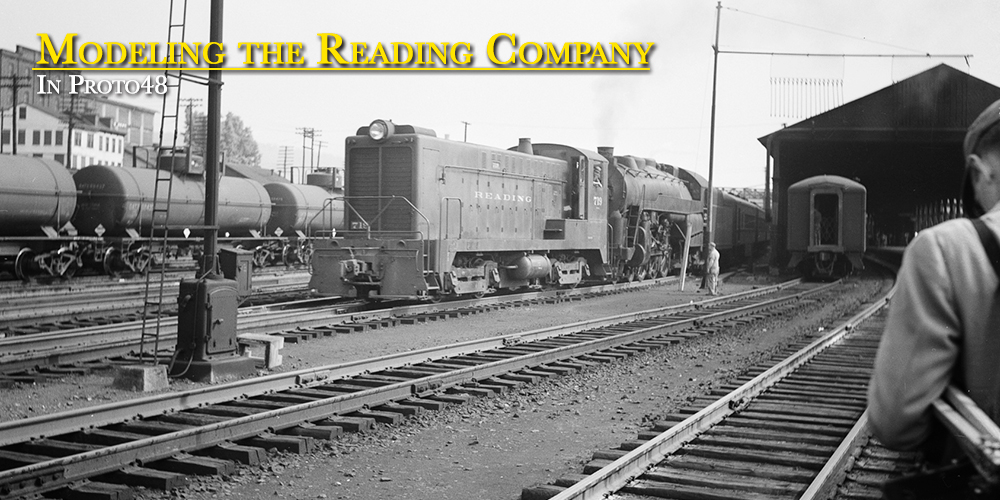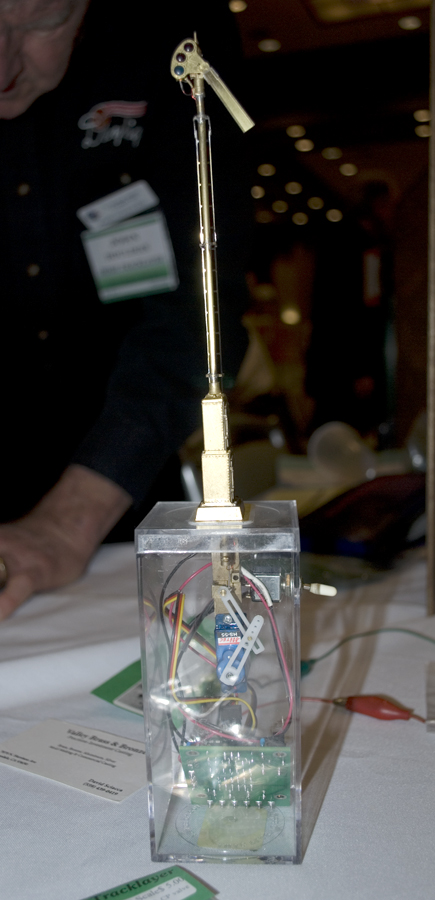John Houlihan, Irish Tracklayer, had one of the most interesting models at the show, a working US&S Style B Lower Quadrant Semaphore. It was powered by a servo motor. Time to go back and look at photographs to find out what signals where on the line in 1952.
Modeling the Reading in Proto48
Modeling the Reading in the Summer of '52


Good morning,
It’s a pleasure making your acquaintance. Excellent website, but could not find a direct way of emailing, so I’ve landed here.
A few years ago, I bought a Reading signal maintainer’s notebook from the 1940s. I was told, it came from old storage boxes in the Muncy Station. It contains info for routine testing etc as well as details for each of the 16 “Signal Sections” between Port Clinton and Williamsport circa 1940s. Since getting the book, I’ve been researching the Catawissa and SS&L branches with a 73-year old buddy whose dad was a signal maintainer for the Reading on a portion of the line.
While we’ve learned much, we are stumped on an interesting detail. Namely, what was the purpose of the white panel (guessing 2-foot square) that extended from the front of many towers I see them on photographs of the Sunbury (SF), Lewisburg (UR), West Milton (WM), and Milton (MU) towers – don’t have a shot of Montgomery yet.
The panels are plain white, mounted in a dark frame usually on the Reading track side, close to a second floor window, and typical without markings. An exception is seen at Lewisburg. My photo is grainy, but the panel seems to be on the Pennsy side of the tower and there is a dark paper? (perhaps 14-inches square) mounted on the panel.
I have a complete set of Reading interlocking diagrams, a half dozen TTs, and two notebooks of info collected from library and field research, but I’m stumped on this one.
All that said, I was wondering if you could help with this matter or know anyone who could shed light? For now, many thanks for your time. And please use the email address provided.
Best regards,
Jim K
Jim,
Thanks for coming here. I wish I could help you with answer but I don’t know.
I am trying to set up a visit with a railroad employee who worked in the region. I’ll add this to my list of questions for him.
I’ll let you know if I get any answers for you.
Thanks, George